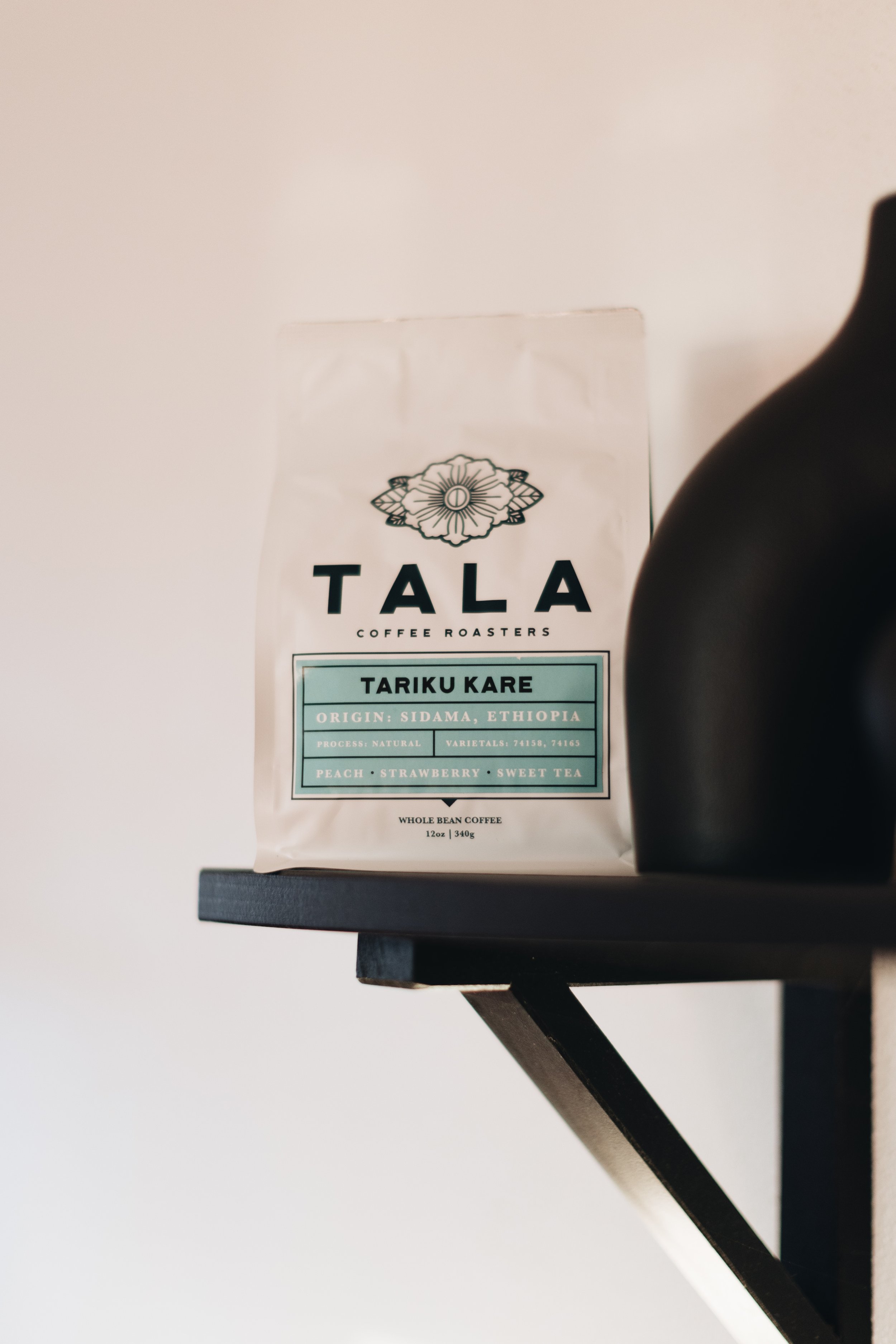
The Tala Blog
Featured Article
WHAT DOES TALA MEAN?
This is one of our most common FAQs. If you’ve ever asked someone at Tala this question, they may have answered with “It means sweet, and beautiful,” which is true, but it isn’t the full story. Let’s explore the full meaning and thought behind our name: Tala Coffee Roasters.
Karimikui AA: Kirinyaga, Kenya
Kenya’s coffee story is as rich and complex as the flavors in your cup. Coffee likely grew wild in the region for centuries, but it wasn’t cultivated commercially until the 1890s, when Catholic and Protestant missionaries brought seeds from Reunion Island.
Decaf - How does it happen?
Decaf coffee commonly has a negative connotation. You hear sentiments such as “death before decaf” or “what’s the point without caffeine?” However, when it receives the same care as other coffees, decaf coffee can be delicious! Still, there are barriers that remain for someone interested in drinking decaf. Two main questions arise: “How is coffee decaffeinated?” and “Is it safe?”
La Bastilla: Jinotego, Nicaragua
La Bastilla, located in Jinotega, Nicaragua, is known for its deeply intentional and forward-thinking coffee production, and this coffee is a perfect example of their passion and focus.
Finca Cruz Loma: Pichincha, Ecuador
A new and exciting single origin is joining the roster for Tala Coffee Club members: Finca Cruz Loma. This lively, honey-processed coffee dances on your palate with flavors of sangria, apricot, and nougat, offering a unique and delightful tasting experience.
Tariku Kare: Sidama, Ethiopia
Introducing the exquisite coffee from Refisa Washing Station, located in Nensebo woreda, Oromia, Ethiopia. This is one of those coffees that will stick in your memories and that you'll tell stories about later when you think of some of the better coffee experiences you've had.
Finca Angamaza: Loja, Ecuador
Finca Angamaza—a coffee from producer Angel Capa Carrion in Ecuador that’s passionately both grown and processed at a very high elevation, truly making this coffee shine and sparkle with immense sweetness. It’s the kind of coffee that you will think back to later in the day, long after you have your last sip in the cup.
A case for the Aeropress!
I brought the AeroPress camping with me and everything changed. After seeing how the AeroPress preformed in the outdoors with bladders of water and minimal equipment, I am never going back. All of the things I mentioned above came into play again but even more so. I didn’t have to worry about breaking it as we tried to fit our cooking gear, cloths, tent and sleeping set up snugly into our packs.
Making the Most: Coffee Grinding
Grinders either fall into the category of burr or blade. Burr grinders are a little higher-end and therefore tend to be more expensive. Average coffee consumers usually opt for a blade grinder because of its attractive price point. Although burr grinders are more ideal for coffee grinding, you can still yield a quality cup with a blade grinder. Let's explore optimizing blade grinders. There are two obvious potential problems with typical blade grinders that you want to watch out for: gauging the correct grind size and even particle size.
Where to Start
Starting yourself out with coffee gear can be a pretty penny--hats off to you if you can get it all in one go--but there is hope for those who don't want to break bank just to brew coffee at home. While some brewing methods require a special gooseneck kettle or other special equipment, there are some really great brewing methods to start off with very little equipment. Here are some of our favorite options:
Making the Most: Water
Water is extremely important in coffee-brewing (it is the majority of the beverage, after all). While brewing, the hot water extracts tastes from the grounds to turn plain water into delicious coffee. This happens through chemical bonding, where the particles in the coffee bond to the particles in the water. Differences in water can disrupt this process and undermine the deliciousness of the coffee. There are two common problems people make with water choices, and both are easily avoidable.











